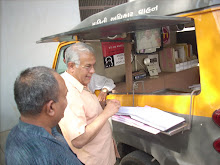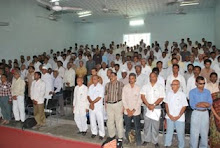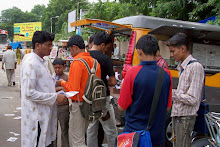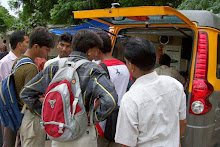The Times of India: Bhubaneswar: Sunday, June 17, 2012.
Rashtrapati Bhawan, Parliament House or the Supreme Court in New Delhi are huge draws for tourists, with visitors clicking snaps to record their date with these institutions of Indian democracy. The same goes for the Vidhana Soudha (Karnataka assembly building) in Bengaluru, where areas are demarcated for visitors to photograph this sterling example of the Mysore Neo-Dravidian style architecture.
However, the imposing state secretariat complex in Bhubaneswar is a no go zone: One can't stand close to it outside the building or click pictures though it has huge potential to attract visitors.
To an application under the Right to Information (RTI) Act, the home department has said that camera is not allowed inside the security zone. Deputy secretary T K Tudu cited Rule 122 of Orissa secretariat security rules 1993 for the restriction on camera. Among other things, the rule prohibits fire-arms, ammunition, weapons, explosives, explosive devices, tape recorder or binocular inside the zone.
In special cases, one has to obtain permission from director, secretariat security, to take any of the prohibited items near the building. Exceptions are officers on duty, who can carry these items as part of their duty and Sikhs, who can carry 'kripan" of authorized length.
"Ban on other things is alright, but camera and tape-recorder should be allowed near the building. These would certainly do no harm. People from remote parts of the state visiting the city would be proud to have a close look at the building or be photographed near it," said Piyush Rout, founder of Local Governance Network, who had filed the RTI application. It is altogether a different matter that people can easily give securitymen a slip to take photographs illegally, he added.
The style of the secretariat building is a blend of Lingaraj temple and Portuguese architecture. The old secretariat building is Khandagiri-Udagygiri style of design. With several beautification initiatives such as the fountain, the garden and upcoming solar light illumination, it remains a visitor's curiosity. However, buildings largely remain out of bounds of tourists though people can enter by obtaining entry pass from the security for specific works inside.
"If close admiration and photography are allowed near the secretariat and the Governor's house, certainly it would add to people's city tour package. Guides can tell visitors about these buildings," said Benjamin Simon, a city-based tour operator.
On the contrary, Simon said, the police have banned plying of tourist buses in the city. This discourages people even from going around the secretariat and other city landmarks such as Ekamra Haat, Rabindra Mandap and Raj Bhawan.
A senior government officer said government should allow visitors around though for security reasons it should consider installing more watch towers, upgraded scanning machines, automated doors and better screening systems.
Former bureaucrats argue there should be a balancing act between security and people's wish to admire the building. "We should keep in mind that it is a place of work and not amusement. Though during normal time norms should be relaxed to allow people in, at present we are going through a difficult time because of the Maoist problem," said former chief secretary N K Panda.
Panda suggested that people should be allowed to a designated area on the premises during stipulated periods of time from where they can view the building or take photographs, he said.














































































